Effective startup site: how customers, partners and investors like one site
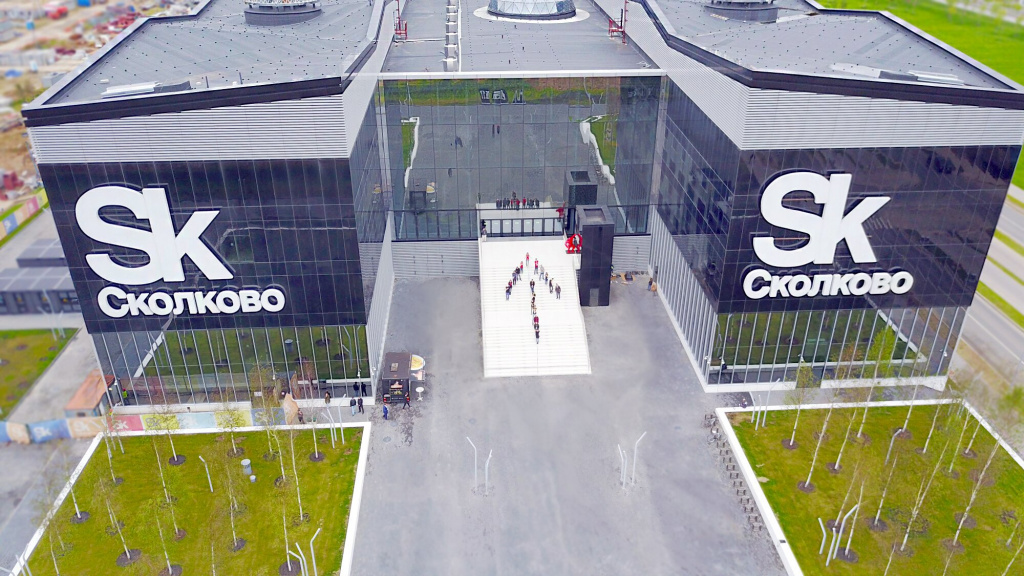
For three years now I have been advising residents of the Skolkovo Technopark on marketing issues, I have seen and analyzed hundreds of websites of young companies, and now it's time to share. Share experience and knowledge on how to make an effective startup site - one that will lead the client, partners and investors.
Imagine the situation. Petya came up with a fork, which itself winds a vermicelli. Petya told friends and acquaintances about this. And 15 plugs were sold in a month, but how to scale further? Having conceived an innovative project, you will probably want as many people as possible to learn about it. The fastest way to do this is via the Internet: advertising in search, on sites, in social networks; publications in online publications; placing goods on marketplaces; YouTube videos and more. and so on.
Whatever you choose, promoting a product without a website is quite difficult. Advertising should lead somewhere, but you won’t insert the order form in the videos. A startup needs a website to talk about the product in more detail than what advertising does, to strengthen the audience’s contact with the product and brand, to collect leads and feedback. And also - to find partners, investors and employees.
But even more than a startup website needs a promotion strategy. After all, the structure and content of the site depends on the goals of the business, the profile of the audience, advertising channels.
What comes first: website or strategy?
Of course, if you already have a website, then there is nothing to do, you will have to catch up and develop a strategy, and then cut everything that is there for it. But in an ideal situation, an advertising strategy should be formed before you pass the TOR to the website for developers.
Here are the main steps in creating a marketing strategy for a startup (and any business in general):
- Define your target audience.
A novice entrepreneur needs to carefully understand who the target audience of his product is. The promotion strategy should be based on the behavioral characteristics of CA. Imagine yourself at the place of the client (or rather, assemble a focus group) and think about where the client is looking for information about products like yours that interests him first. This is important because the tastes of customers are often very different from the tastes of the business owner.
- Explore the market and competitors.
If you came up with a startup, most likely your product is innovative. You probably won’t find competitors with identical offers, but look anyway. Suddenly you invented a bicycle, more advanced versions of which have long captivated the market.
So your product is truly unique. To find competitors, you need to start thinking about the problem that he solves. How did people deal with this problem before you? What tools did you use? These sellers are your competitors. Learn their approaches and do better.
- Form measurable goals.
After studying the target audience and the market, you should already have an idea of what you can count on in the current environment. Set goals and timelines for achieving them. It is important that the goals are measurable and the time frame real.
- Identify promotion channels.
Knowing where your target audience lives, watching something from your competitors and adjusting for your goals, you can decide on advertising channels. But there are nuances. If the product is new and the demand for it has yet to be formed, contextual advertising on the search will not work - in order for it to be effective, your product must be known and sought. Although, of course, you can advertise through related areas and run display ads so that your brand becomes familiar.
Social networks (meaning SMM) work best (read “sell") in B2C and if you have a micro-business. In other cases, they allow you to maintain contact with the audience, warm it up, build your expertise and trust in the brand, but the conversion here will be long. Do not wait for quick sales.
SEO is better off until your business starts making money. Because search engine optimization is very slow, traffic will come only in a few months, and before that time it will take a lot of effort and investment. Here you earn for the first time - then you will begin. In the future, SEO will lead customers, even if you slow down the work on the site for a month. Unlike contextual advertising, which stops immediately flow of orders.
Content marketing and other PR activities are a great opportunity for a new brand to tell about itself. By publishing in the media and on thematic online sites, you will reach a new audience and interest potential customers, if, of course, your product is worth something. People will go to the site, on social networks, subscribe to newsletters, and you can keep in touch with them through retargeting and email marketing.
Strategy is a roadmap for promoting your startup. In it, you formulated what you are striving for when you want to get it and what you need to do for this. Now, with all this in mind, we create a startup site.
What should be a startup site
A startup site is a tool for achieving business goals, the very goals that you have fixed in your advertising strategy. In order for the site to do what you want from it, you need to perform several important points - at least eight.
1. Reliable, scalable and suitable for promotion engine
You have your own developers in the team, you will probably want to “gash” something of your own, because only the engine written for your project will 100% meet the needs of your business. Boxed solutions are too stereotyped for you, and your project competes uniquely with a snowflake, and therefore it should have the same engine.
But. It’s difficult to manage the platform on the recorder engine. Sometimes even a typo on the main one without a developer cannot be corrected, and an hour of such a specialist costs much more than an hour of work of a content manager. Does your investor think money isn’t it?
At the first stage, the startup most likely does not need a super complex site, so it is better to take a flexible boxed solution from inexpensive ones. The developers of such solutions have already filled all the possible bumps for you and have definitely foreseen, for example, the ability to manually edit meta tags, which your developer could forget about. Typical CMSs are easy to manage, and you can hire an inexpensive freelancer for minor edits and improvements. When choosing an engine from the ready, it is better to pay attention to the options from the left column. Those on the right are not recommended.

The most important thing is that the selected engine allows you to fulfill the requirements of search engines, quickly update information on the site, has protection against viruses and hacker attacks.
2. Modern design
One can argue endlessly about what a good design is. Some people like the design of the Sima Land office in Yekaterinburg, while others even design www.apple.com seems redundant. However, when you first go to a site, you usually immediately understand whether it has a modern design or not.
How old do you think these sites are? There is a feeling that no one has been dealing with them for a long time?
When developing a site for your innovative product, try to design it accordingly.
- Use wide sliders - they are in trend. Put the most important information on the first screen, make the pages as informative as possible. But instead of text bricks, use more capacious formats - infographics, videos, icons. This is necessary so that when you first find yourself on the site, the new client can within a few seconds understand what you are doing, from which area your technology is and what it can be useful for.
- Think usability - imagine that this is your first time on the site of your startup. What do you as your potential customer need to know first? Where do you expect to see contacts? What about the basket? How many pop-ups can you endure in a minute without harming the psyche? Better to assess usability, call someone from the outside and do not be offended by the verdict. And do something with the speed of loading the site: clean the code, optimize images and more. Only the most persistent users wait for the page to load for more than 3 seconds.
- Mobility - in the 21st century it’s even a shame to talk about it, but as before, many developers are the last to think about mobile users. And by the way, the share of those who use the Internet from phones and tablets has long exceeded 50% of all Internet users. Make sure that all pages of the site, forms and images are displayed correctly in different browsers and on different devices. And make all phones clickable.




3. Clear and useful content
Beautiful pictures on the site are a plus, but the user does not come for them. He needs an answer to a question that worries him, a solution to his problem. What the visitor sees on the first screen should interest him so much that he wants to scroll down the page. The first screen you need to grab attention, give an answer to the user's request. And rest assured, no one seeks to know how young your company is and how dynamic it is. At the center of it all is the user's problem.
A good example: when you go to cnc360.ru, you immediately see the contacts, the list of products, areas of work, regions with which the company works.

Unsuccessful example: when you go to the website www.riostc.ru , you are immediately asked to fill out a form of six fields. You have not yet understood what is being offered to you, but they are already demanding something from you. And the "Message" field is not large enough.
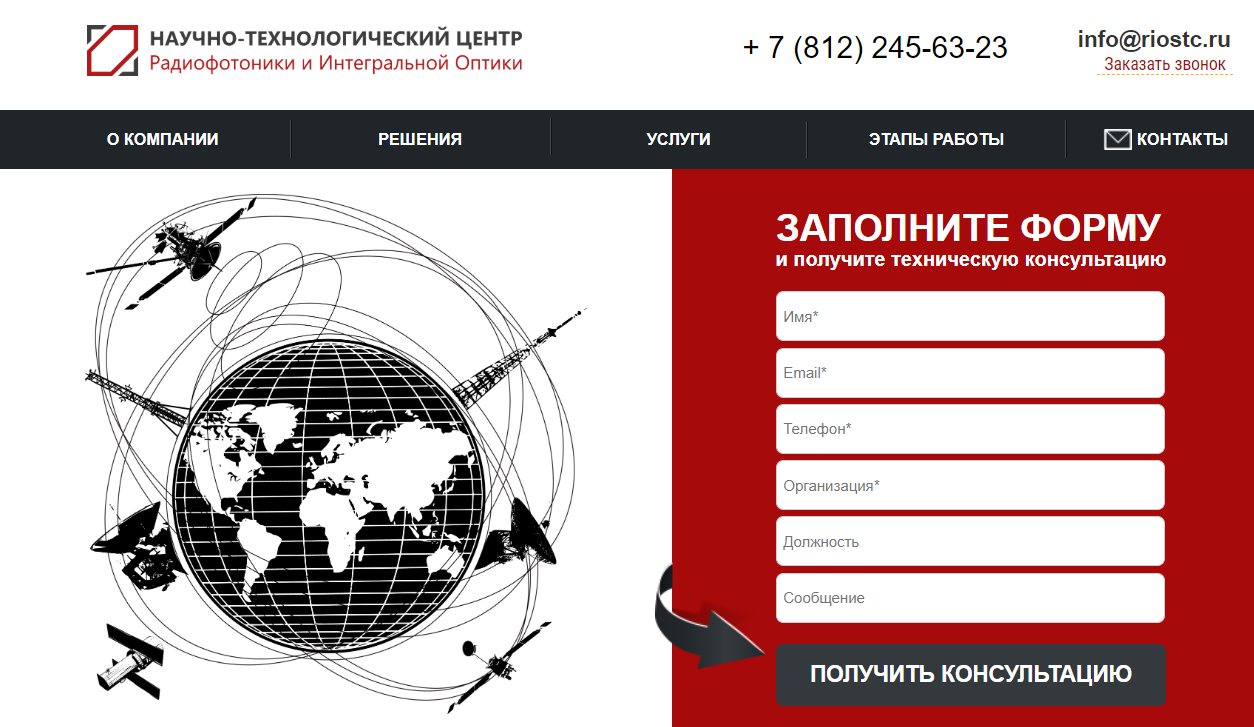
Here is what should be on the startup site so that the user does not close the page immediately:
- what product do you offer and what problem does it solve;
- how your solution differs from competitors' decisions;
- on what conditions are you ready to cooperate or why should someone invest in you;
- why your company should be trusted;
- who are your customers / partners (if any).
Stand in the place of your target customer - what information do you need in order to decide to contact your company?
Having collected the answers to all these questions, think about how beautiful, capacious and understandable it is to submit it all. More than two paragraphs can be mastered by not every user. When “building” the main page, use not “bricks” of text, but pictures, photos, videos, 3D models, icons and infographics.
The InnoLabs company (lpwa.ru), a Skolkovo resident, made an overview of the possibilities on the main page and listed the advantages of the technology in the form of icons.
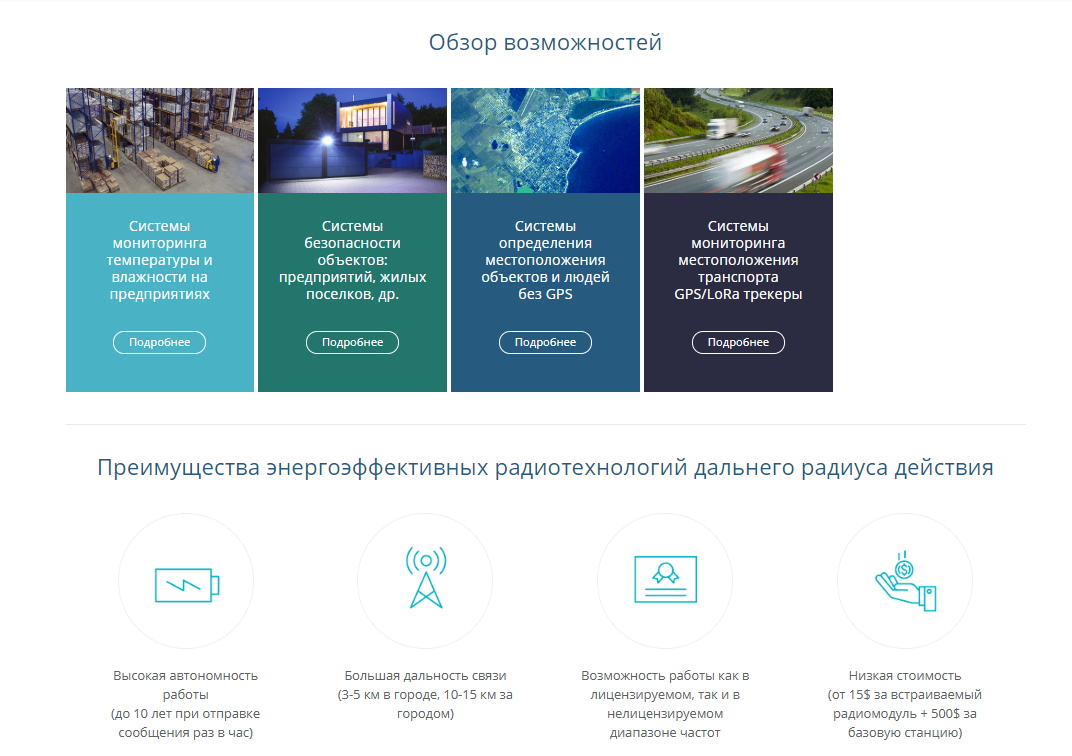
The Internet is full of companies with the “lowest prices,” “best opportunities,” “high quality,” but the numbers can best illustrate your benefits. For example, on the site of the Dispatcher monitoring system (intechnology.ru), percentages of increasing production efficiency when using the system are indicated and links to detailed descriptions are given.
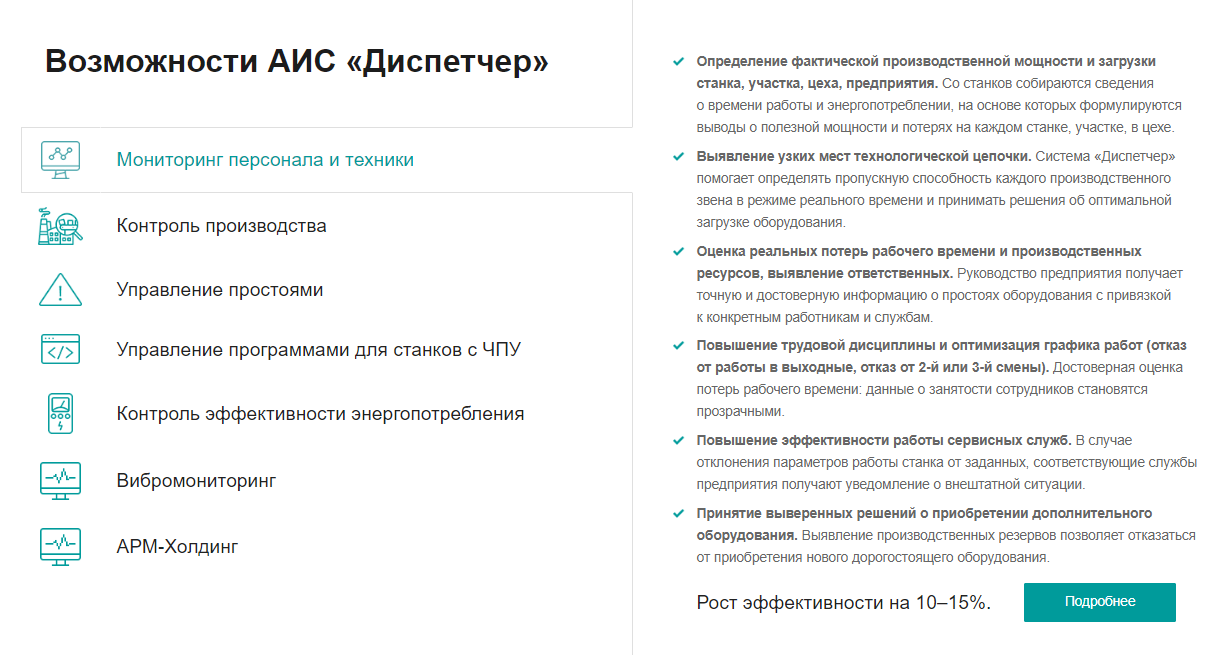
Another way to show that you can be trusted is with a card with enterprises that have already implemented Dispatcher.
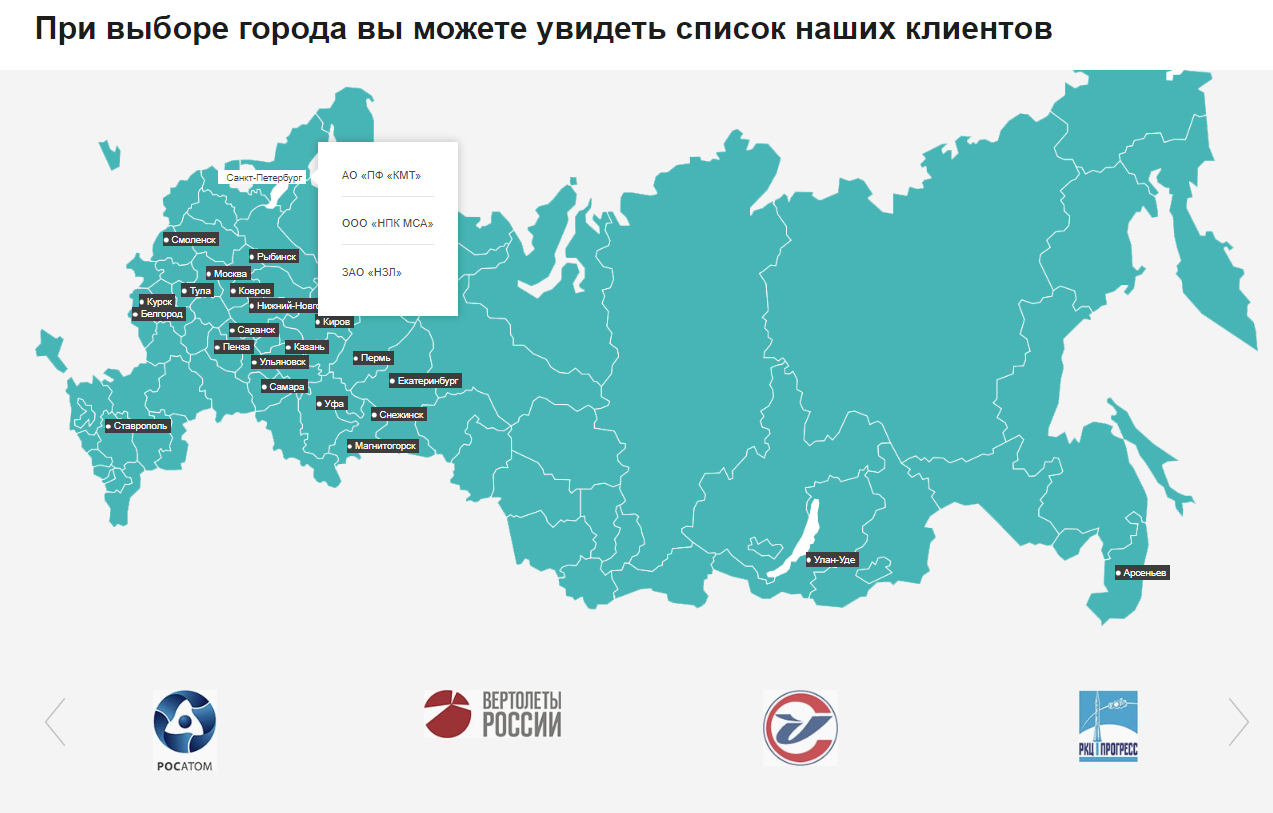
Even if your startup plans to work with different countries, do not immediately create 10-15 language branches. Evaluate your capabilities - can you fill everything with content right away? If not, limit yourself to Russian (if your target audience speaks Russian) and English - the universal language of business communication.
4. Company Information
Young entrepreneurs like no one else know how difficult it is to gain the trust of an audience if the company does not yet have a name. Building trust is not a quick process, but it’s very important to do everything right from the start. On the startup website, post all the information that can position the user for your product, technology and company:
- certificates, patents, diplomas testifying to victory in competitions;
- photo of the founder and team - this is how your product will have a human face;
- the history of the company, its achievements - even if your startup did not grow in the garage, but in the hothouse conditions of the accelerator, there is no need to hide it;
- business presentations, videos, 3D tours of the showroom, examples of product introductions;
- thanks and feedback from customers - it is important for the customer to know that he is not your first and that others liked everything;
- company news or blog - this will show that you are developing;
- address, office photos, phones - that will confirm your reality;
- details, constituent documents, contact details.
Too much stuff? Structure! A good example is on the website of Skolkovo resident Twins Technologies.

An example of how not to do this is the “Contacts” section on biosoft.ru. Here you will not find a card or phone number. To make sure that the company really exists, you need to fill out the form. But will you trust a company that does not trust you with your phone number?
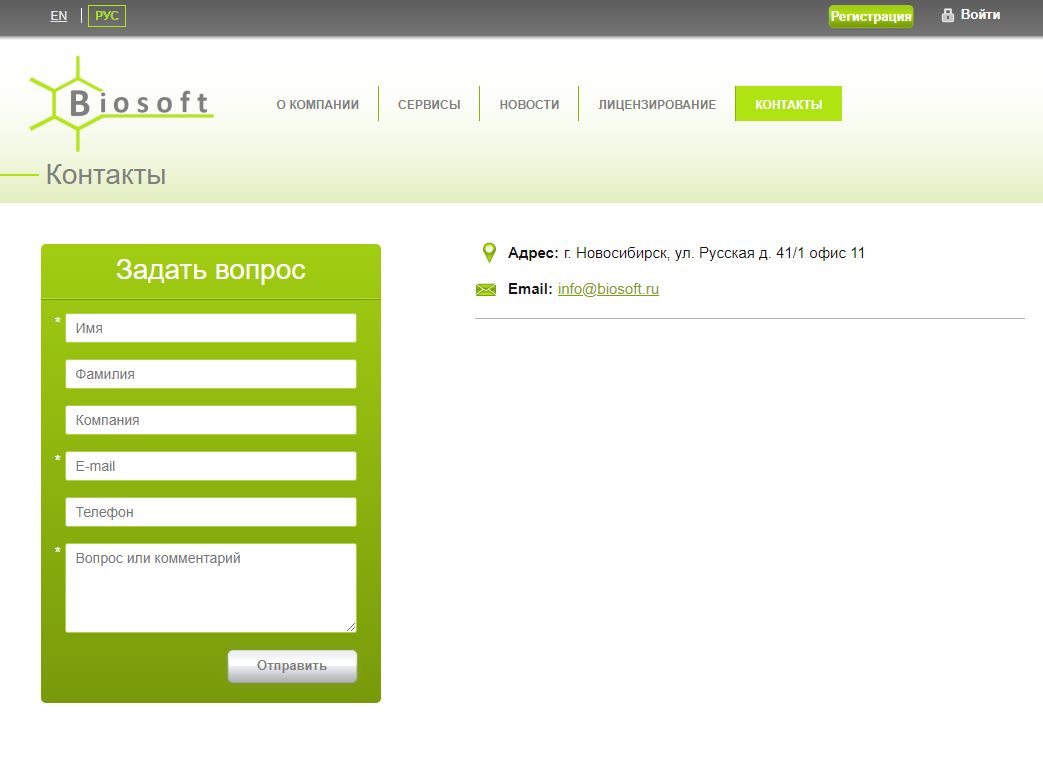
If you have created a news section on the site, do not forget to update it, otherwise visitors will doubt whether your startup is still alive.

5. Different tasks - different sections
If you are looking for an investor, do not write about it directly on the main page. Home - for the target audience of your product. Make a section for “Investors” and describe your investment proposal there, attach a business presentation, quote the most interesting of the business plan, tell us about your strategic vision. If there is a lot of information, divide it into subsections. Or create a separate landing page, as you did in Dodo Pizza.

If you do not have enough partners for complete happiness, act on the same principle as with investors - create the appropriate section on the site with detailed information and advantages. Here is an example on the Twins Technologies website.
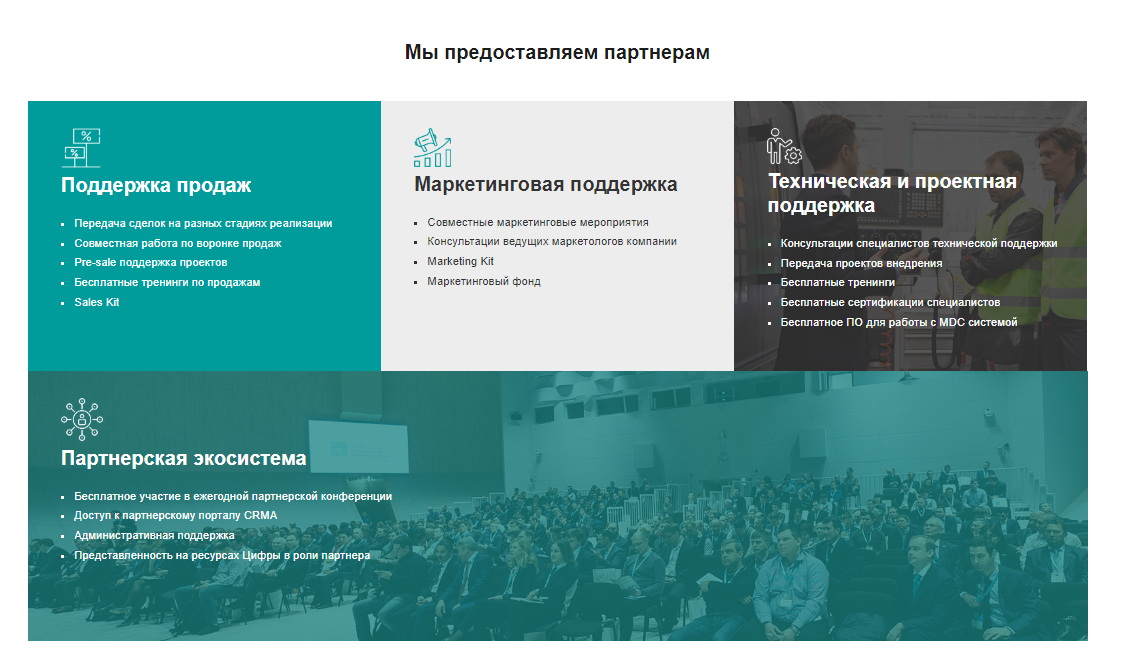
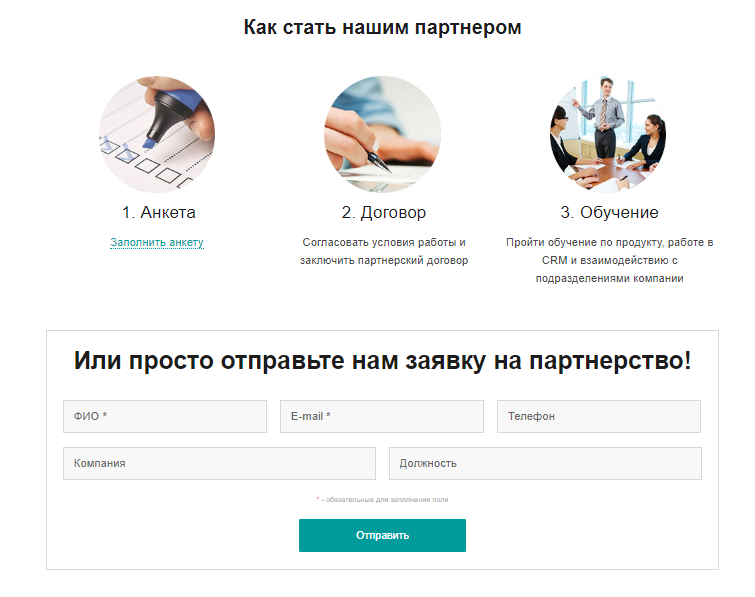
6. Cases
It is difficult to find something more convincing than a real example of your work. Of course, a startup is unlikely to have many implemented projects, but it is necessary to illustrate the application of your product in real conditions. If you have not been able to sell your solution yet, capture the test process, find a partner who agrees to implement your product for free, or try it for yourself and share your impressions. Everything is better than the void in the Portfolio section.
There are several ways to design a section with examples of work. For example, Prana posted an implementation map on the site, and described each project in detail in the “Implementation List” section.
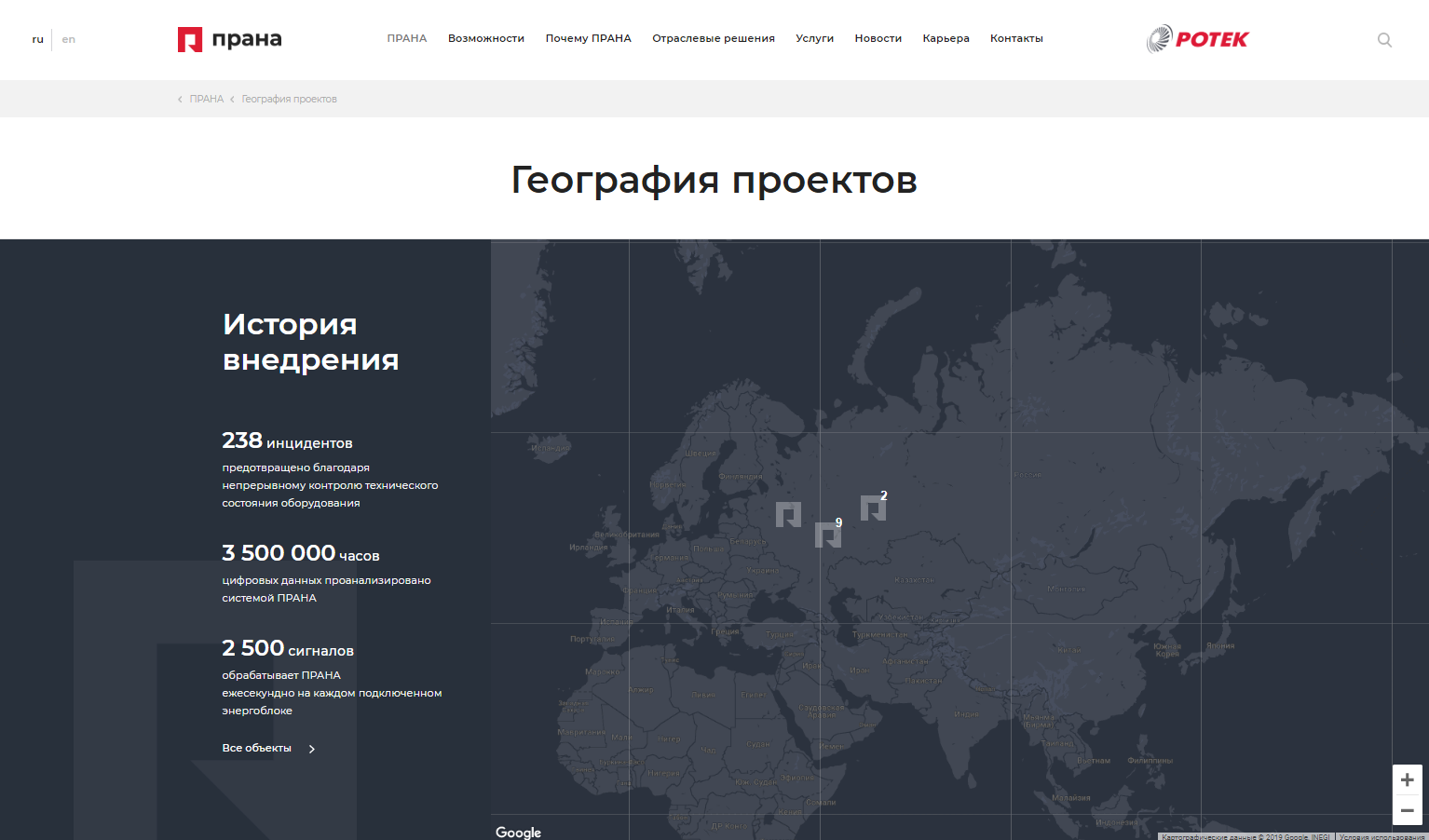
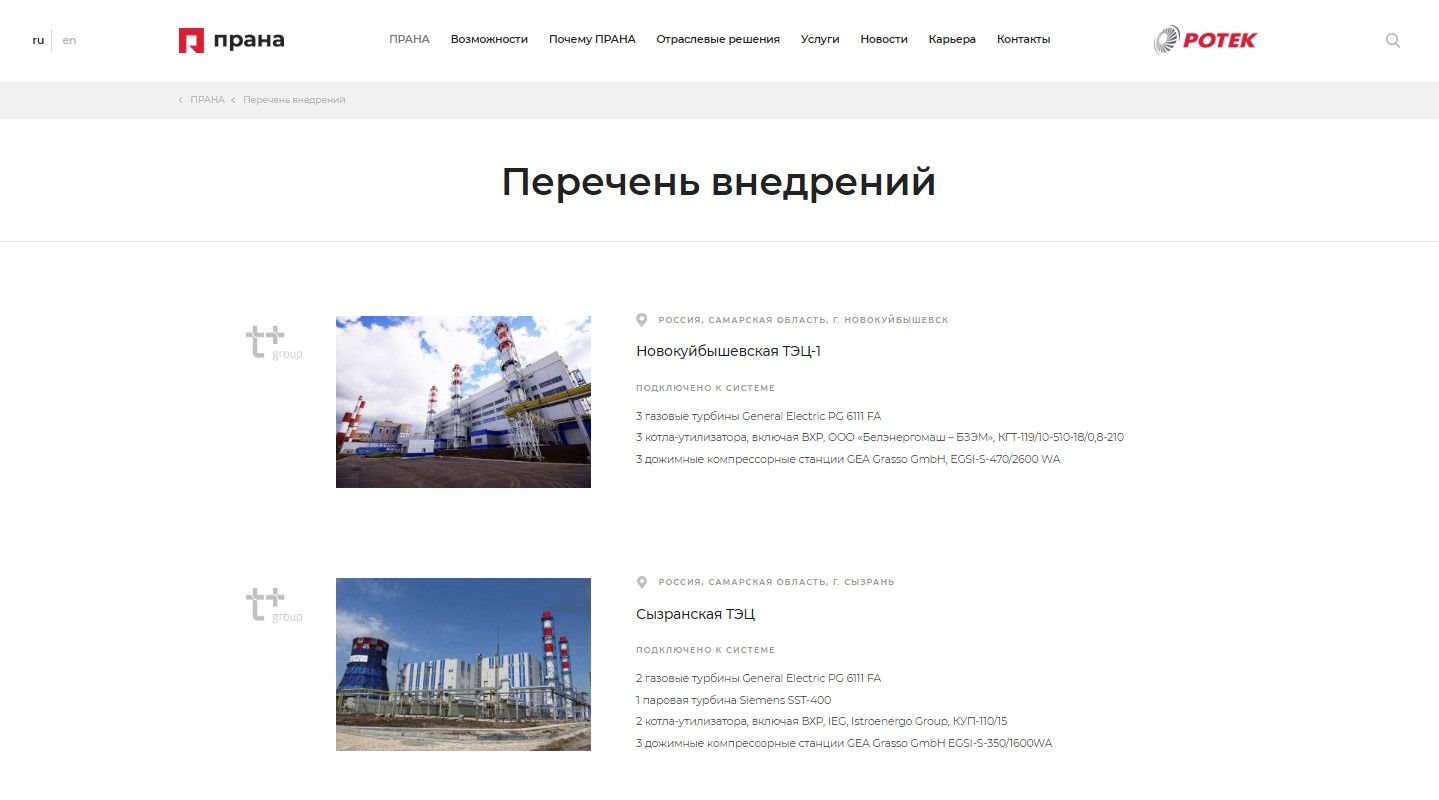
7. Robots are human too
There is a superstition that before entering a new apartment, you first need to run a cat there. Also with the site (only this is not superstition) - in order for traffic to flow there, search robots must first study it. Usually, search robots have no problems with this, unless, of course, the following entry is in the robots.txt file on your site:
User-agent: *
Disallow: /
Yandex has instructions on the design of this file “ Help for customers ” and a service for checking its correctness “ Analysis of robots.txt ”. Do not disdain these tools, otherwise there may be problems with indexing a site in search engines.
So that the startup site does not interfere with promotion in search engines, except robots.txt, you still need to configure a lot. Check if your site is working correctly, according to the checklist below.
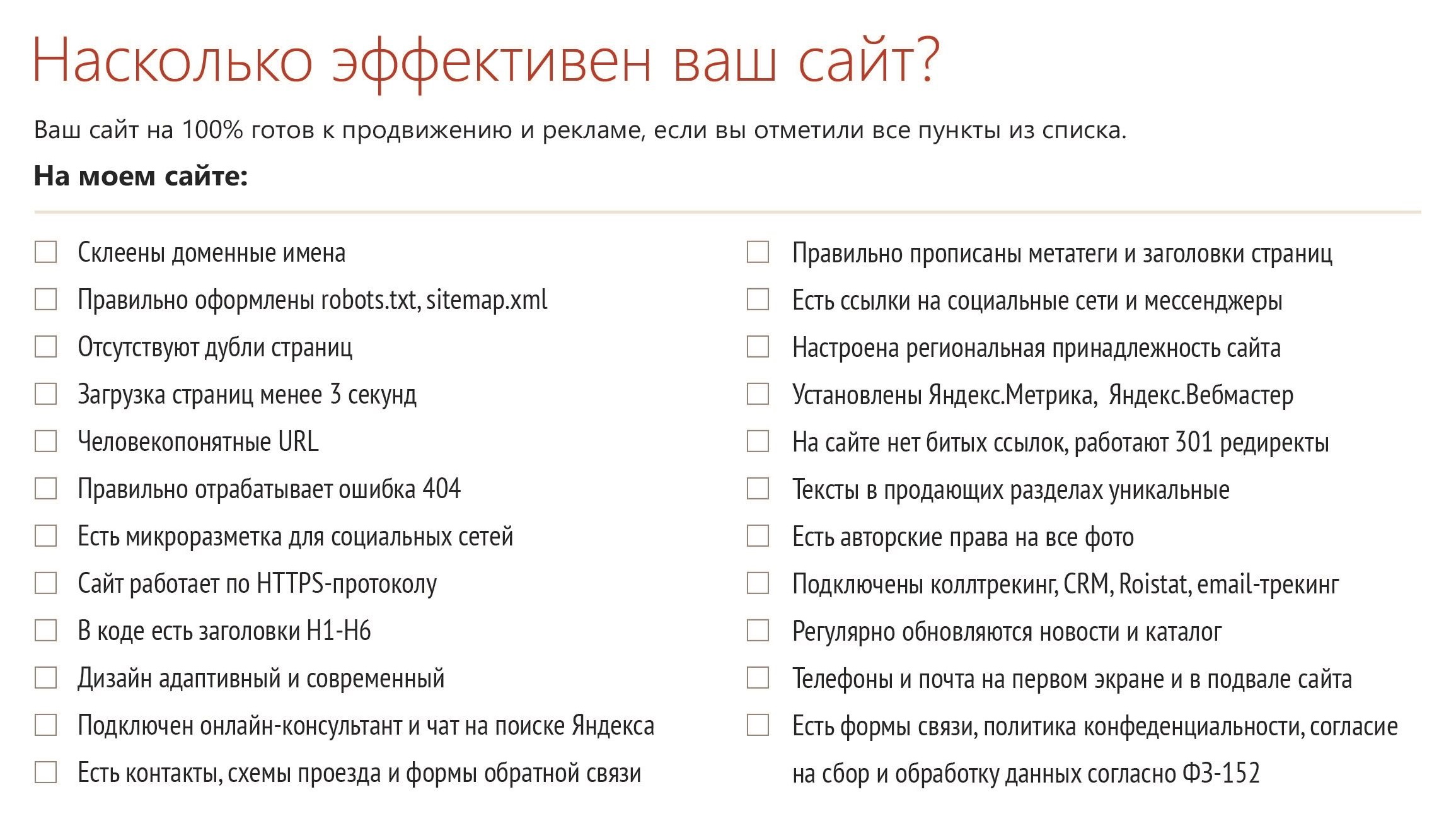
8. Dura lex, sed lex
If you work with clients from other countries, make sure that the versions of your sites targeted at foreign audiences comply with all the requirements of the respective countries. European Union legislation, for example, requires visitors to be able to disable the ability to track their actions on your site if they have metrics from Yandex or Google. According to German law, the site should have an Impressum page. Russian sites are regulated by law FZ-152. Here is what it requires:
- The site should have a “Privacy Policy” section, in which it is necessary to describe what data you collect, how you store, protect and process it and what responsibility you bear for them. Moreover, a link to this section should be on every page.
- In order to use user data, you must obtain their consent to this. Therefore, before submitting the form, the visitor must give their explicit consent by checking the corresponding box. The link to the Privacy Policy in the form must be active.
- Users who logged in to your startup’s site for the first time should be notified that the site has systems for collecting information from browser settings.
- The site should be located on a Russian hosting.
10 steps to an effective startup site
- Explore the market, define goals, create a portrait of Central Asia - build a promotion strategy on their basis.
- Choose a convenient engine for a site that meets the needs of SEO promotion.
- Think carefully about the first screen. The customer’s problem, solution and call to action is the most important. And do not forget about the contacts. Add social media widgets, an online consultant, and a callback module.
- Think over the structure: for each task - its own section.
- Make content interesting, useful, and concise - use pictures, photos, videos, 3D models, icons, and infographics.
- When the site is developed and filled, conduct usability audit and check the site for compliance with the requirements of search engines.
- Regularly update, supplement and correct the information on the site. Not only people will appreciate, but also search robots.
- Show a portfolio with a description of the projects and photos, reflect everything on the map, if the geography of your projects can impress.
- Publish social evidence - customer, partner reviews, information on participation and victory in industry competitions.
- Test new advertising tools and analyze the results.
The entrepreneurial spirit and the fire in the eyes are certainly important for a young businessman who launches an innovative product on the market. Enthusiasm tends to fade away when there is no result for a long time. In order for your startup to start showing positive dynamics before the inspiration of the team (and investor money) starts to dry up, at the very start, develop a marketing strategy and a quality website. And then you will succeed.
Evgeny Churanov, Yandex training expert
All Articles

